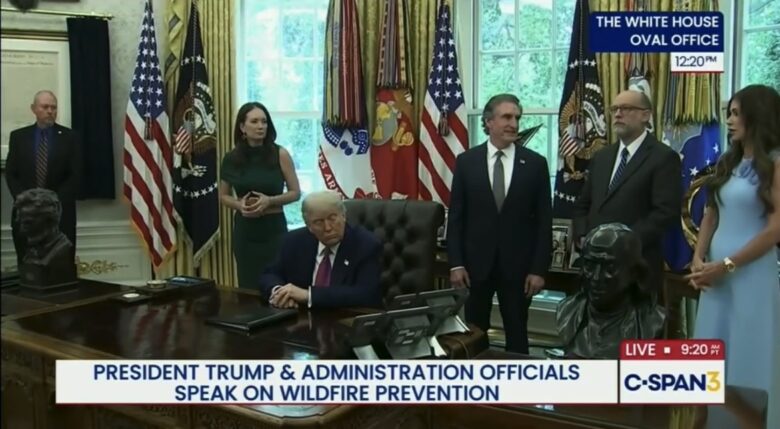Overview:
In a June 10th Oval Office update broadcast on C-SPAN, President Trump and Homeland Security Secretary Kristi Noem announced the start of a federal withdrawal from FEMA operations. The goal: empower governors with direct control over emergency responses. As states prepare, the move raises questions about funding, preparedness, and long-term impact.
U.S. Secretary of Homeland Security Kristi Noem addresses the press in the Oval Office, detailing the Trump administration’s plan to shift FEMA responsibilities to state governments.
In a significant policy shift announced June 10th, 2025, President Donald Trump and U.S. Secretary of Homeland Security Kristi Noem declared plans to dismantle FEMA as a centralized federal agency. They plan to transfer primary responsibility for emergency response to individual states over the next 6 to 18 months.
The announcement was made during a press briefing from the Oval Office and broadcast on C-SPAN. It comes as the 2025 hurricane season begins. Secretary Noem warned that this season could bring “three to five major storms” and emphasized FEMA’s readiness in the short term. However, she made clear that the administration’s long-term vision is a full decentralization of disaster response.
Kristi Noem:
“FEMA fundamentally needs to go away as it exists,” Noem stated. “We’re building communication and mutual aid agreements among states… so they can stand on their own two feet. The federal government steps in only for catastrophic circumstances.”
President Trump supported the move by comparing it to his administration’s efforts to return education control to the states. “We want to wean off FEMA,” he said, “and bring it down to the state level.”
While supporters see this as a chance for states to take control of their own crisis management, critics warn that the transition period could pose serious risks. As FEMA funding and authority diminish, state governments must quickly adapt, restructure budgets, and build independent emergency infrastructures. They must do all this while managing a potentially dangerous storm season.
Noem assured the public that governors have already been briefed and are beginning to coordinate resources directly. She noted that recent FEMA responses to tornadoes and other disasters have received praise. However, the federal system as a whole has historically failed “thousands, if not millions.”
As the Trump administration moves forward with decentralizing disaster relief, the country enters a pivotal period. The success of local leadership—and the ability to secure emergency funding—will be tested in real time.
Video footage courtesy of C-SPAN. Full remarks available at www.c-span.org. Used under fair use for journalistic purposes.
